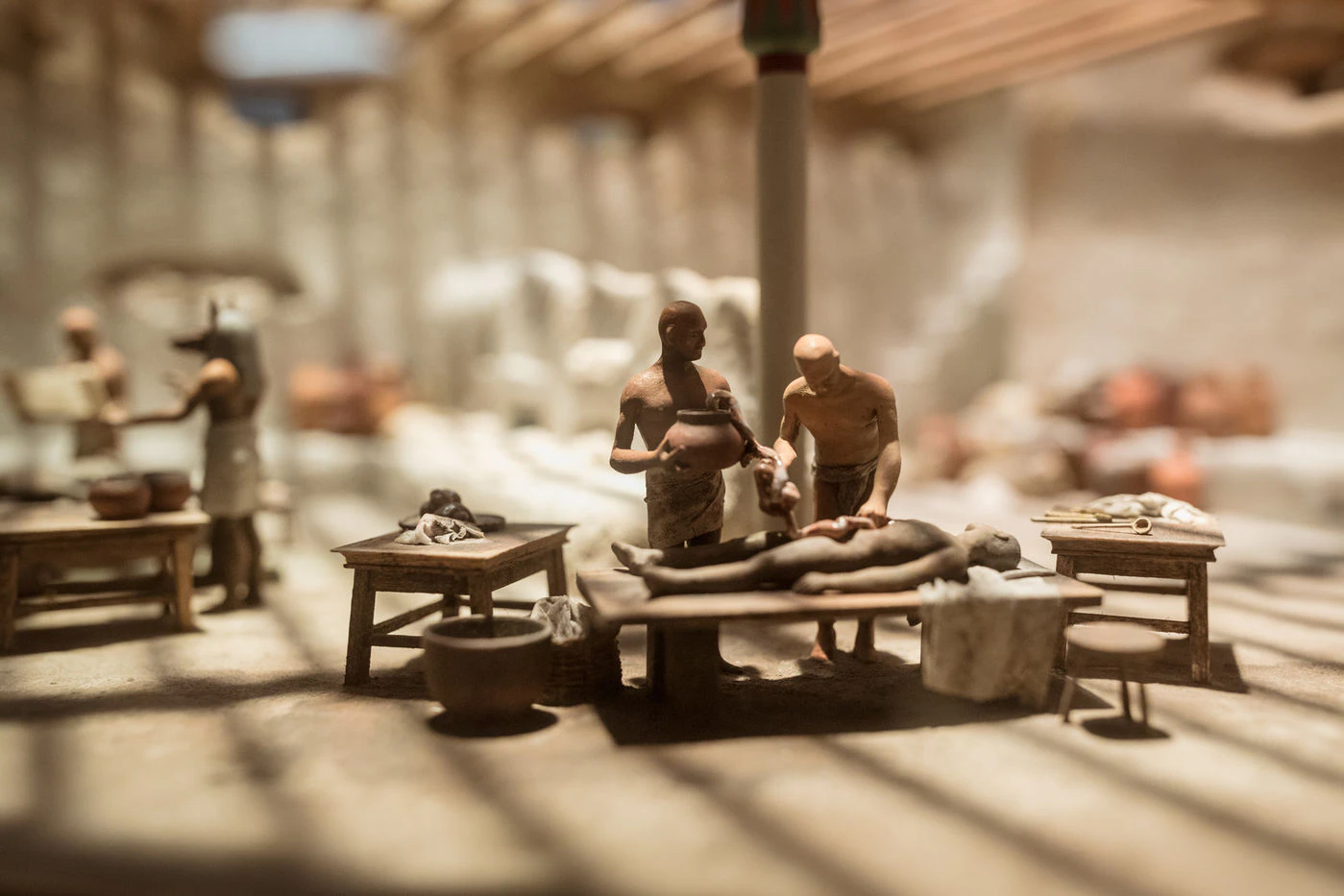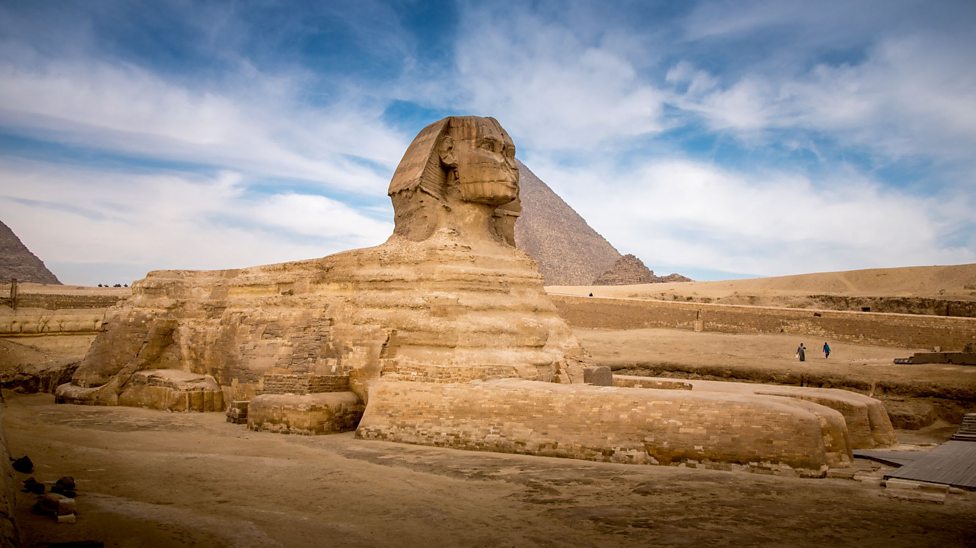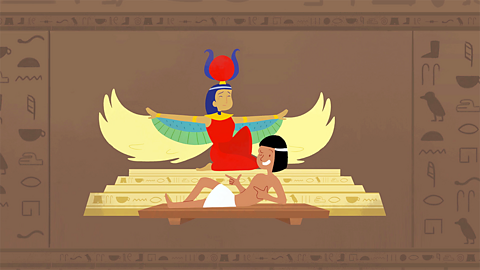

Ancient Egyptians mummified the dead because they believed the soul lived within the body even after death, so they meticulously preserved bodies to keep the spirit in tact.
Along with the mummies and sarcophagi on display in Inside Ancient Egypt are dioramas that depict the 70-day process, an extensive ritual that required both spiritual and biological knowledge.
The process began by removing all internal organs that might decay rapidly—all but the heart, which was thought to house the soul. Using a salt called natron, embalmers dried out the body completely.
Then the body was wrapped in strips of linen. Sometimes embalmers would write prayers on the linen strips or include amulets within the wrappings to protect the dead along their journey.
After this delicate preservation process, the mummy was ready for the ceremonial burial that would usher its former host to the afterlife.
Let's Visit Some Egyptian Sites -- BBC Bitesize


BBC Bitesize